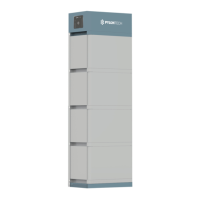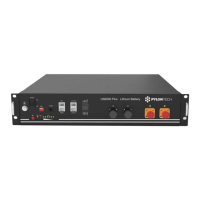What to do if the status LED is solid orange and battery module LED is orange on Pylontech Battery Pack?
- JJennifer ConradJul 27, 2025
If the status LED is solid orange and a battery module LED is solid orange, it could be due to: * **Over/under temperature protection:** Check the environment temperature and wait for the BMS to release the protection. * **Over voltage protection:** Verify the DC charge voltage setting or wait for the BMS to release. * **Under voltage protection:** Use the black start function and then charge the system. * **Battery module BMS failure:** Requires further analysis with a debug tool or replacement of the battery module.



